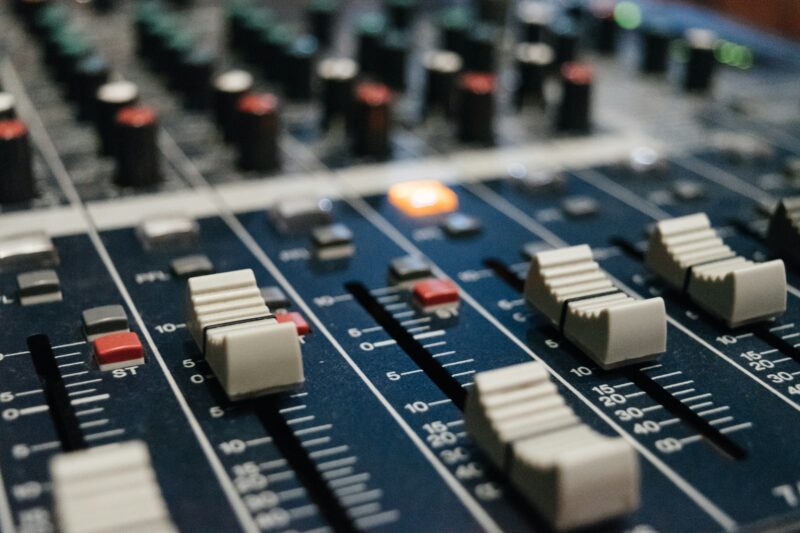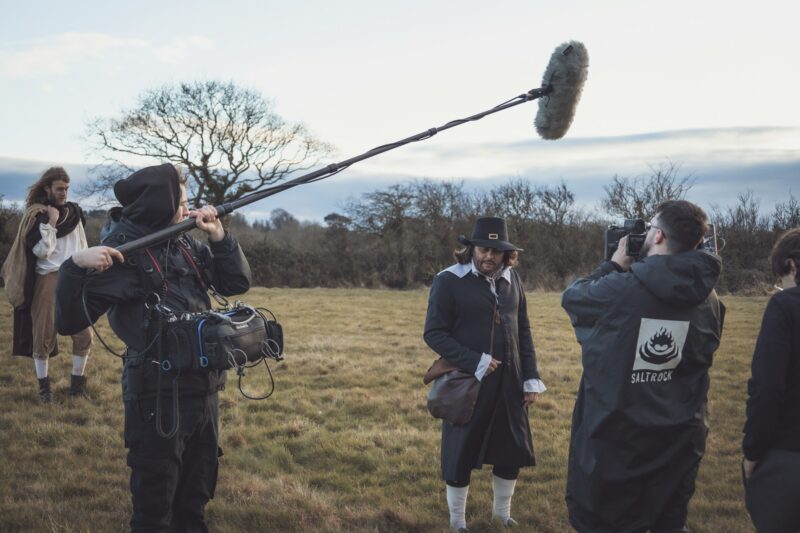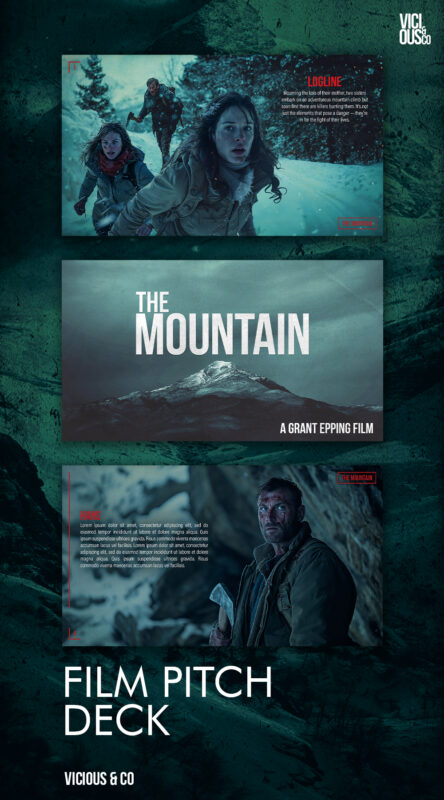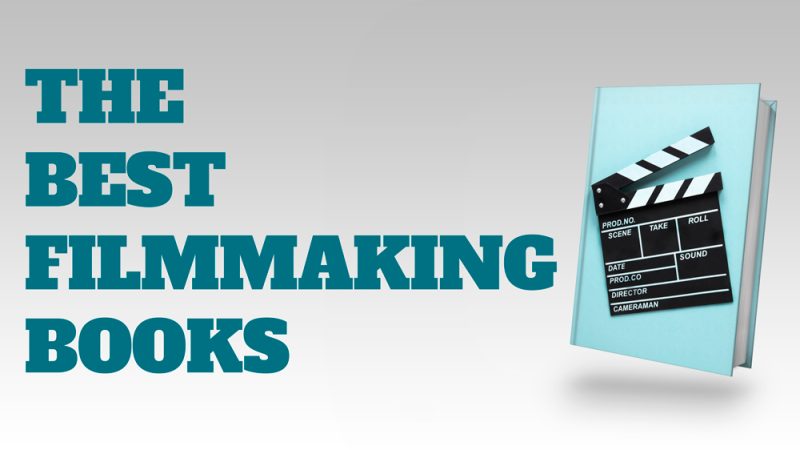
An Easy Guide to Audio Production for Film and Television
Audio production for film and television is a fascinating and intricate field that combines creativity with technical expertise. From the sounds we hear in a thrilling action scene to the subtle background noises that enhance a drama, sound design plays a crucial role in shaping the viewer’s experience. In this guide, we will explore the essence of audio production, diving deep into the techniques, processes, and the impact sound has on storytelling.
The Essence of Sound Design in Film and Television
Historical Evolution of Sound Design in Cinematic Arts
The journey of sound design in cinematic arts has evolved significantly since the first film, which was essentially a silent piece. The advent of synchronized sound in the late 1920s revolutionized the industry, allowing filmmakers to enhance storytelling through audio elements. As technology progressed, the introduction of multi-track recording gave audio engineers the ability to layer sound effects, dialogue, and music, creating a richer audio experience. Today, sound design has become a crucial part of the workflow in audio post-production for film, where sound designers meticulously craft every aspect of audio to ensure it complements the visual narrative.
From the early days of cinema, where audio was an afterthought, we’ve now reached an era where sound is integral to filmmaking. The historical evolution showcases how sound design transformed from simple sound effects to complex audio landscapes. Innovations like Avid Pro Tools have become staples in the audio production field, enabling sound designers to manipulate audio quality and dynamics with precision. This evolution illustrates the growing recognition of sound’s importance, reflecting how it can profoundly affect the audience’s emotional connection to a film or television program.
Defining the Sound Designer’s Role
The role of a sound designer is multifaceted and vital in the audio production process. They are responsible for creating the auditory landscape that supports the film’s narrative, often collaborating with directors, composers, and mixers. A sound designer must possess both artistic and technical skills, allowing them to craft sound effects, ambiance, and soundtracks that resonate with viewers. Additionally, they may oversee the audio post-production workflow, ensuring all audio elements are seamlessly integrated into the final product.
Sound designers are the unsung heroes behind the scenes, shaping the emotional tone of a film. They work closely with the director to understand the vision and feel of the project, translating that into soundscapes that enhance the viewer’s experience. Their expertise in tools like Logic Pro and Izotope allows them to manipulate audio effects and create immersive environments that draw the audience in. By defining the sound design, they not only contribute to the aesthetic of the film but also help in building a cohesive world that audiences can connect with on a deeper level.
Crafting the Auditory Landscape: Techniques and Processes
Capturing Production Sound on Set
Capturing production sound on set is a critical step in audio production that lays the groundwork for all subsequent audio elements. Sound engineers utilize microphones strategically placed to record location sound, ensuring that every nuance of the performance is captured. This includes everything from the actors’ dialog to the ambient sounds surrounding them. A good workflow on set can save a significant amount of time in audio post-production for film, as high-quality location sound reduces the need for extensive re-recording and dialog replacement later on.
When capturing production sound, the choice of mic and placement is crucial. By using lavalier mics for close dialogue and shotgun mics for broader sound capture, sound engineers can ensure the best audio quality. Additionally, monitoring audio levels in real-time helps avoid issues during mixing. This proactive approach not only enhances the production’s overall audio quality but also allows for a smoother audio post-production process, where sound mixers and editors can work with clean, well-captured audio, leading to a polished final product.

The Art of Foley: Bringing Scenes to Life
The art of Foley is a fascinating aspect of sound design that involves creating and recording sound effects to enhance film scenes. Foley artists use various props and techniques to reproduce everyday sounds, from footsteps to rustling clothes, adding a layer of realism that engages viewers. This process is often done in a studio setting, where Foley artists sync their sounds to the visual elements on screen, ensuring that each sound effect complements the action. The meticulous nature of Foley work is crucial for creating a believable auditory experience that immerses the audience in the film.
Foley brings a unique charm to sound design, allowing filmmakers to tailor sounds specifically to their scenes. By utilizing various objects and creative methods, Foley artists can create sounds that resonate with the film’s atmosphere, enhancing the emotional tone and narrative. This process is not just about mimicking real-world sounds; it’s also about crafting a distinctive soundscape that supports the visual storytelling. The magic of Foley lies in its ability to breathe life into scenes, making them more engaging and impactful for the audience.
ADR: Enhancing Dialogue Clarity
Automated Dialogue Replacement (ADR) is an essential technique in audio post-production that focuses on enhancing dialogue clarity. During the ADR process, actors re-record their lines in a studio setting, allowing for greater control over audio quality. This technique is particularly useful when location sound is compromised due to unwanted background noise or technical issues. By carefully matching the original performance, sound designers can seamlessly integrate the new dialog into the final audio mix, ensuring a polished listening experience for viewers.
ADR is pivotal for maintaining the integrity of a film’s narrative. It allows filmmakers to capture the perfect take without the distractions of on-set noise. With tools like Pro Tools and other audio editing software, mixing engineers can fine-tune the dialog, adjusting levels and EQ to match the surrounding soundscape. This meticulous attention to detail ensures that the final product resonates with audiences, creating a seamless flow between visuals and sound that enhances the storytelling experience. Ultimately, ADR plays a crucial role in delivering high-quality audio that captivates viewers from start to finish.
Sound Editing and Layering Effects
Sound editing and layering effects are integral components of the audio production process, where sound designers meticulously craft the auditory experience. By combining different audio elements, such as sound effects, Foley, and ambient sounds, they create a rich soundscape that enhances the film’s narrative. This process involves careful attention to detail and a deep understanding of how sound interacts with visuals, ensuring that every sound effect is in harmony with the story being told. Using software like Avid Pro Tools, sound editors can manipulate audio tracks, applying effects that transform the raw sounds into a cohesive auditory experience.
The art of sound editing extends beyond simply layering sounds; it’s about creating a dynamic range that captivates the audience. Each sound effect must be thoughtfully placed to evoke specific emotions or reactions, whether it’s the tension of a suspenseful moment or the thrill of an action sequence. Mixing engineers play a critical role in this process, balancing the various audio elements to create a polished and immersive experience. Through precise sound editing, filmmakers can enhance the storytelling, ensuring that the audience is fully engaged and emotionally connected to the film.
The Critical Role of Sound Mixing
Sound mixing is the final step in the audio production process, where all audio elements come together to create a cohesive soundscape. This crucial stage involves balancing dialogue, sound effects, and music to ensure they complement each other seamlessly. Mixing engineers use sophisticated software and techniques to adjust levels, apply EQ, and manipulate dynamic range, creating a final audio mix that enhances the overall film experience. The sound mix plays a significant role in establishing the film’s tone, guiding the audience’s emotions through the careful placement of audio elements.
The sound mixer’s expertise is vital in this stage, as they must possess a keen ear for detail and an understanding of how sound interacts with visuals. By utilizing tools like Pro Tools and Ableton Live, they can create an audio landscape that perfectly aligns with the director’s vision. The mixing process is not just technical; it’s an art form that requires creativity and intuition to bring the film’s story to life. A well-executed sound mix can elevate a film, making it more impactful and memorable for the audience.
Film and TV Pitch Decks



The Impact of Sound on Storytelling and Emotion
Sound Design and the Viewer’s Experience
Sound design plays a pivotal role in shaping the viewer’s experience, deeply influencing how stories are perceived and felt. The auditory elements, from ambient sounds to sound effects, contribute significantly to the emotional tone of a film or television program. Through strategic sound placement, filmmakers can create a sense of tension, joy, or nostalgia, guiding the audience’s emotional journey. This immersive experience hinges on the quality and creativity of sound design, as it enhances the storytelling by providing context and depth.
The impact of sound design extends beyond mere aesthetics; it can evoke powerful emotional responses that resonate with viewers long after the credits roll. For instance, in horror films, sound effects are often used to heighten suspense and fear, making every creak and whisper feel amplified. Conversely, in romantic dramas, a well-composed soundtrack can underscore the emotional weight of a scene, drawing viewers into the characters’ experiences. By thoughtfully integrating sound into the narrative, filmmakers can create a richer, more engaging story that captivates audiences on multiple levels.
Sound Design in Different Genres: Horror, Action, and Beyond
Different genres of film and television utilize sound design in unique ways to enhance their storytelling. In horror, sound effects are instrumental in creating an atmosphere of suspense and fear. The strategic use of silence, sudden sound effects, and eerie ambient noises can keep viewers on the edge of their seats. In contrast, action films often rely on an adrenaline-pumping soundtrack and dynamic sound effects to heighten the excitement, immersing the audience in fast-paced sequences. Understanding how to effectively use sound in various genres is essential for sound designers, as it directly impacts audience engagement and emotional response.
In the realm of comedy, sound design can play a significant role in timing and punchlines, where sound effects can accentuate humor and enhance comedic moments. Similarly, in dramas, ambient sounds and subtle music can evoke deep emotions, enriching character development and storytelling. The versatility of sound design across genres showcases its importance in film and television production, as it influences how stories are communicated and experienced. By mastering the nuances of sound design, audio professionals can elevate genre-specific storytelling, making each film or television program unique and memorable.

Technological Advancements and Future Trends in Sound Design
The Influence of Technology on Sound Design
Technological advancements have significantly shaped the landscape of sound design, providing audio professionals with innovative tools and techniques to enhance their craft. Software like Pro Tools and Logic Pro has revolutionized audio editing and mixing, allowing sound designers to manipulate audio elements with precision and creativity. The rise of digital audio has also made it easier to capture, edit, and distribute high-quality sound, enabling filmmakers to achieve more immersive soundscapes. As technology continues to evolve, it opens up new possibilities for sound design, pushing the boundaries of what is achievable in audio production.
The influence of technology on sound design is evident in the growing use of immersive audio formats like Dolby Atmos, which allows sound designers to create a three-dimensional sound experience. This trend highlights the demand for more engaging and realistic audio experiences in film and television. Additionally, advancements in artificial intelligence are beginning to play a role in sound design, with tools that can automate certain processes, freeing up audio engineers to focus on more creative aspects. As these technologies continue to develop, they will undoubtedly reshape the future of sound design, offering exciting new opportunities for innovation.
Sound Design in Virtual and Augmented Realities
Sound design in virtual and augmented realities presents unique challenges and opportunities for audio professionals. In VR and AR environments, sound must be spatially aware, meaning it needs to change based on the viewer’s perspective and movement. This creates a more immersive experience, as sound designers must carefully craft audio elements that react dynamically to user interactions. The importance of audio quality in these environments cannot be overstated, as it plays a crucial role in making virtual scenarios feel realistic and engaging.
As virtual and augmented realities become increasingly popular, sound design will continue to evolve to meet the demands of these immersive experiences. Techniques like ambisonics and binaural audio are gaining traction, allowing sound designers to create three-dimensional soundscapes that enhance user engagement. Moreover, the integration of sound effects and audio elements in these platforms requires collaboration with game designers and developers, ensuring that the auditory experience aligns with the visual narrative. As the technology advances, the potential for innovative sound design in VR and AR will expand, paving the way for new storytelling possibilities.

Case Studies: Iconic Sound Designs in Film and TV
Analyzing Sound Design in Iconic Scenes
Analyzing sound design in iconic scenes reveals the profound impact audio has on storytelling. Take, for instance, the chilling soundscape of the horror classic “Psycho,” where the use of staccato strings during the infamous shower scene heightens tension and fear. This meticulous layering of sound effects and music illustrates how sound design can create a visceral reaction in viewers. By studying such scenes, audio professionals can glean insights into how sound elements are thoughtfully integrated to enhance the narrative and emotional weight of a film.
Iconic scenes often rely on sound design to create memorable moments that linger in the audience’s minds. For example, in “Star Wars,” the unique sound of a lightsaber is instantly recognizable, showcasing how a carefully crafted sound effect can become a character in its own right. These case studies highlight the importance of sound design in shaping cinematic experiences, emphasizing that every sound plays a role in the overall storytelling process. By deconstructing these iconic moments, sound designers can learn valuable lessons about the art of audio production and its critical role in engaging audiences.
The Role of Sound in Character and World-Building
Sound design is instrumental in character and world-building, as it helps define the personality of characters and the atmosphere of their environments. The distinct sounds associated with a character, be it their footsteps, voice, or unique sound effects, contribute to their identity and perception by the audience. For instance, the use of specific soundtracks or audio motifs can signal a character’s emotional state or development throughout a film, creating a deeper connection with viewers. This attention to auditory details enriches the storytelling and enhances character arcs.
World-building through sound design involves creating a cohesive auditory landscape that reflects the film’s setting and tone. From the bustling streets of a city to the eerie silence of a deserted landscape, sound designers craft ambient sounds that transport the audience into the film’s universe. This immersive experience is crucial for engaging viewers, as it allows them to feel as if they are part of the story. By thoughtfully integrating sound elements into character and world-building, filmmakers can create a rich tapestry that captivates audiences and draws them into the narrative.
Conclusion: The Indispensable Nature of Sound Design
In conclusion, sound design is an indispensable aspect of audio production for film and television, enhancing storytelling and emotional engagement. From the historical evolution of sound design to the critical role sound plays in shaping viewers’ experiences, it is clear that audio elements are vital in creating immersive narratives. As technology continues to advance, sound designers will have even more tools at their disposal to craft compelling auditory landscapes that resonate with audiences. Understanding the nuances of sound design is essential for anyone involved in the film and television industry, as it adds depth and richness to the art of storytelling.
Ultimately, the impact of sound design extends beyond mere entertainment; it shapes how stories are told and experienced. The intricate work of sound designers, mixers, and audio engineers ensures that every element of audio contributes to the overall narrative, making the viewing experience unforgettable. As we move forward in this ever-evolving field, the importance of sound design will only grow, solidifying its status as a cornerstone of effective storytelling in film and television. Embracing the artistry and technology of sound design is key to unlocking the full potential of cinematic expression.
FAQ
Q: What’s the whole deal with audio production for film and TV?
A: Audio production for film and TV is all about capturing, mixing, and editing sound to enhance the visual storytelling. It’s not just about the music; it includes dialogue, sound effects, and ambiance that all come together to create the final experience.
Q: How do I get started with audio production?
A: Start by learning the tools and strategies used in the audio production field. Familiarize yourself with software like Pro Tools or Logic, and don’t forget to dive into the technical side of things like volume control and audio mixing.
Q: What’s the difference between audio post production and audio production?
A: Audio production generally refers to the entire process of creating sound for a project, while audio post production focuses specifically on the editing and mixing phase after filming is complete, including tasks like recording dialogue replacement (ADR) and cueing foley effects.
Q: Can you explain what “mixing” is in audio production?
A: Mixing is the process where you balance all the elements of your audio track, such as dialogue, music, and sound effects, to create one cohesive sound. It’s where you adjust volume levels, pan sounds, and add effects to make everything sound just right.
Q: What’s the deal with templates in audio production?
A: Templates are pre-set audio settings that help you streamline your workflow. They can include your preferred effects, routing, and track layouts, making it easier to jump into new projects without starting from scratch each time.
Q: How do I deal with unwanted noise in my audio?
A: Unwanted noise can be a real bummer! Use noise reduction tools, apply filters, and make sure to calibrate your equipment properly. If you’re recording, try to choose a quiet spot and use good quality headphones to monitor your audio.
Q: What are some common mistakes to avoid in audio production?
A: A common mistake is not paying attention to your volume levels, which can lead to clipping and unusable audio. Always monitor your levels, and remember to double-check your mixes on different speakers to ensure they translate well across formats!
Q: How important is pre-production in the audio workflow?
A: Pre-production is super important! It sets the stage for everything that follows. During this phase, you can plan out your audio needs, create storyboards, and decide on the overall sound design for your film or video project.
Q: What should I know about recording dialogue replacement?
A: When recording dialogue replacement (ADR), make sure you capture the actor’s lip movements accurately. It’s a crucial part of making the audio match the visuals seamlessly. And remember, having a good re-recording mixer can make a huge difference!
Q: How can I prepare the mix for foreign markets?
A: To prepare the mix for foreign markets, ensure that your audio conforms to international standards and that any music licensing is sorted out. You might also need to create stereo versions that work well with different audio formats used in other countries.

